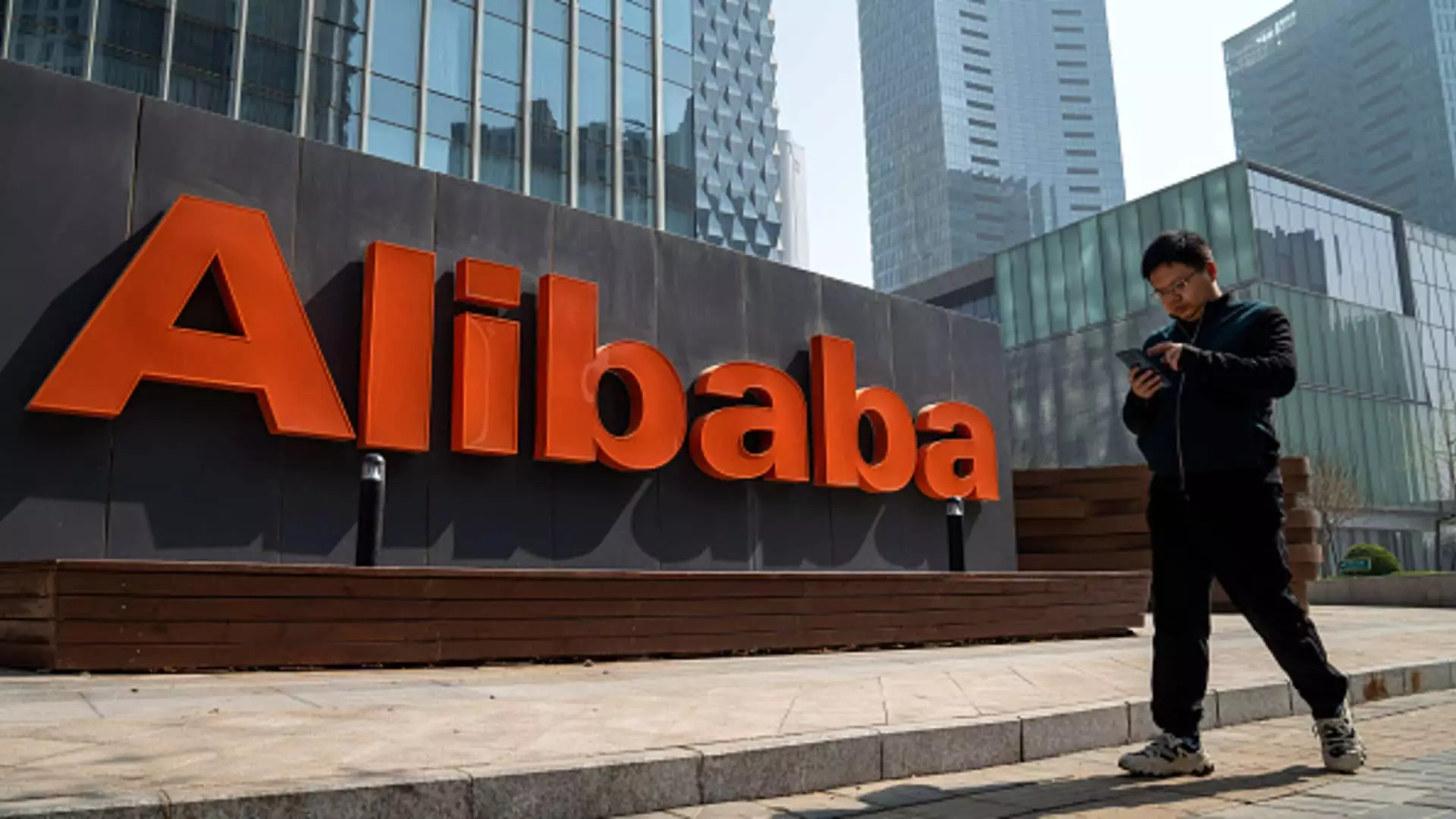The financial updates from Alibaba have once again detailed a landscape marked by contrasts. As the Chinese economy wrestles with sluggish growth and changing consumer behavior, Alibaba has reported a strong profit increase in its most recent quarter despite a revenue shortfall. This highlights not only the company’s resilience but also the broader economic issues plaguing one of the world’s largest markets.
In an ironic twist for investors, Alibaba’s net income skyrocketed to 43.9 billion Chinese yuan ($6.07 billion) for the quarter ending September 30, a staggering 58% increase compared to the same period last year. An impressive figure that starkly outstripped the LSEG forecast of 25.83 billion yuan. However, while profit soared, revenue painted a different story. The sales figure, 236.5 billion yuan, showed a minor year-on-year increase of 5%, lagging behind the anticipated 238.9 billion yuan forecasted by analysts. This duality reflects the complexities businesses like Alibaba face in a fluctuating economic climate.
Alibaba attributed its significant profit rise primarily to changes in the value of its equity investments and a decrease in impairment losses, alongside an increase in operational income. Such reliance on investment income raises questions about the sustainability of their core business performance, especially as the global economic landscape continues to shift.
Despite the mixed results, Alibaba’s shares have demonstrated resilience, rising nearly 17% this year and showing a 3% uptick in pre-market trading after the earnings release. This indicates a level of investor confidence, albeit cautious, as they closely monitor the performance of Alibaba’s key revenue generators—Taobao and Tmall Group. Notably, revenue from these segments saw only a 1% increase to 98.99 billion yuan, which feels rather underwhelming given the backdrop of robust growth expectations that usually accompany e-commerce giants.
The broader implications of these results suggest a tough year ahead, with other e-commerce players like JD.com also missing revenue projections. Investors are now turning their attention towards potential government stimulus efforts, particularly a recently announced 1.4-trillion-yuan stimulus package designed to bolster growth in the beleaguered retail sector.
The evolving consumer landscape is critical to understanding Alibaba’s performance metrics. With retail sales rising just 4.8% year-on-year in October, there are signs of a slow recovery. However, significant challenges remain, reflected in the muted enthusiasm during traditional shopping events such as Singles’ Day—an essential indicator of consumer sentiment in China. The reported growth in gross merchandise volume during this period indicates a somewhat revived interest among consumers, but whether this will translate into sustained long-term growth is yet to be seen.
Analysts point to Alibaba’s performance as a reflection of not only its operational strategies but also the wider trajectory of the Chinese economy. The economic slow down, characterized by a depressed real estate sector and weakened consumer confidence, poses significant risks moving forward.
In contrast to the domestic challenges, Alibaba’s international shopping platforms, including Lazada and AliExpress, showed remarkable resilience with a 29% year-on-year sales increase to 31.67 billion yuan. This robust growth outside China could provide a critical offset to any domestic declines, indicating that Alibaba may be leveraging its global market presence effectively.
Moreover, the company’s Cloud Intelligence Group revealed a modest sales growth of 7% to 27.65 billion yuan, suggesting an upward trend in a segment that Alibaba has been keen to promote as a future growth engine. With enhancements in AI technologies and public cloud products, the company seems poised to compete fiercely with major players like Baidu, Huawei, Microsoft, and OpenAI.
A significant takeaway from Alibaba’s earnings call is CEO Eddie Wu’s reiteration of confidence in the company’s core businesses and willingness to invest further in supporting long-term growth. The company has faced challenges from regulatory policies but is taking definitive steps to adapt. Recent launches of AI-powered tools targeting small businesses and partnerships for cloud service provision signal Alibaba’s commitment to remaining competitive.
While Alibaba’s financial results demonstrate a mix of strong profits against subdued revenues, the interplay between internal initiatives and external economic factors defines the path ahead. As the company navigates a complicated landscape, both investors and consumers will be watching closely to see how it adapts to the changing tides of the Chinese economy.

